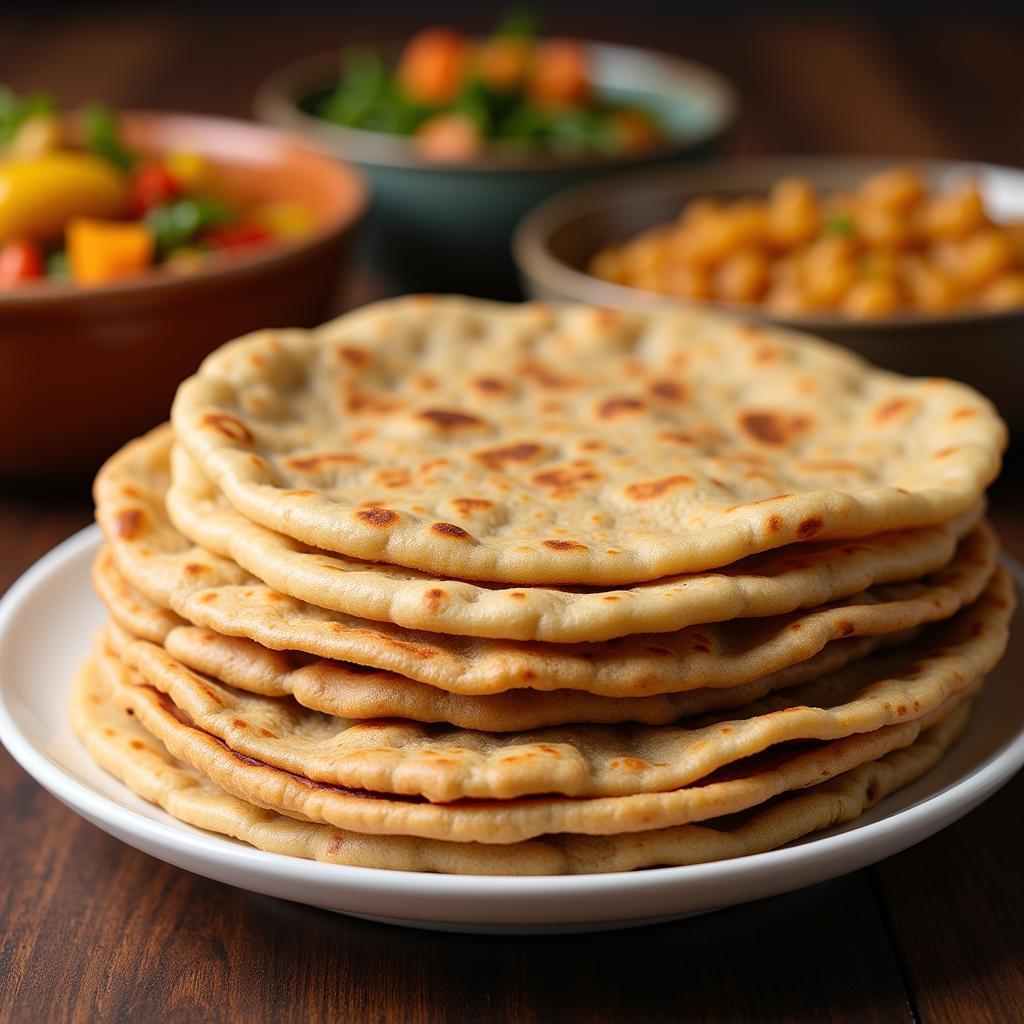Discovering the Delight of African Chapati Bread
African Chapati Bread, a ubiquitous flatbread across East Africa, holds a special place in the region’s culinary landscape. From bustling city markets to quiet village homes, the aroma of freshly cooked chapati wafts through the air, promising a delicious and satisfying meal. This article delves into the fascinating world of African chapati, exploring its origins, variations, cultural significance, and of course, how to make it yourself. Check out this delicious African chapati bread recipe!
The History and Origins of Chapati in Africa
While chapati’s origins trace back to the Indian subcontinent, it has become a truly African staple, especially in countries like Kenya, Tanzania, and Uganda. Brought to the region by Indian immigrants during the colonial era, chapati quickly adapted to local tastes and ingredients, evolving into a unique culinary expression. It’s now deeply ingrained in East African cuisine, enjoyed as a breakfast treat, a side dish with stews, or a quick and easy snack. The influence of Indian culture on East African cuisine is truly remarkable, and chapati stands as a testament to this culinary exchange.
 East African Chapati Bread Served on a Plate
East African Chapati Bread Served on a Plate
Making African Chapati: A Simple Yet Rewarding Process
Though simple to make, crafting the perfect African chapati requires a bit of practice. The basic ingredients are readily available: flour, water, oil, and salt. The dough is kneaded until smooth and elastic, then rolled out thinly and cooked on a hot griddle or pan. The resulting chapati should be soft, slightly chewy, and lightly browned. Many families have their own secret tips and tricks for making the perfect chapati, passed down through generations. Find out more about how to make African chapati!
What Makes African Chapati Unique?
African chapati distinguishes itself from its Indian counterpart with subtle yet significant variations. Often, it incorporates all-purpose flour instead of atta, resulting in a slightly different texture. Furthermore, the addition of oil or ghee during the kneading process adds a rich flavor and helps achieve a softer texture. These adaptations reflect the availability of local ingredients and the evolving tastes of the region. What African country which have sand chapati?
Chapati in East African Culture and Daily Life
African chapati isn’t just food; it’s a cultural symbol, woven into the fabric of daily life. It’s a common sight at breakfast tables, served alongside chai or coffee. During celebrations and festivals, mountains of chapati are prepared to feed family and friends. Its versatility and affordability make it a popular choice for street food vendors, who often serve it rolled up with various fillings, creating a quick and delicious African fast food.
“Chapati is more than just bread,” says renowned Tanzanian chef, Aika Msuya. “It represents community, sharing, and the simple pleasures of life. It’s a taste of home for many East Africans, no matter where they are in the world.”
How Many Calories are in African Chapati?
Wondering about the nutritional value of this delicious bread? Find information on African chapati calories!
 Family Enjoying African Chapati
Family Enjoying African Chapati
Conclusion
African chapati bread, with its rich history and cultural significance, is more than just a simple flatbread. It’s a symbol of culinary adaptation, cultural exchange, and the everyday joys of food. Whether enjoyed as a simple snack or a part of a larger meal, African chapati offers a delicious and satisfying taste of East Africa. So, why not try making it yourself and experience the delight of this beloved bread?
FAQ
- What is the difference between African chapati and Indian roti?
- Can I make chapati without oil?
- How do I store leftover chapati?
- What are some popular fillings for chapati?
- Is chapati a healthy food option?
- Can I use whole wheat flour to make chapati?
- Where can I find an authentic African chapati recipe?
Do you have any other questions? Here are some related topics you might find interesting:
- African Chapati Recipe
- African Fast Food
- African Country Which Have Sand Chapati
- African Chapati Calories
- African Chapati How to Make
When you need assistance, feel free to contact us by Phone: +255768904061, Email: kaka.mag@gmail.com or visit us at Mbarali DC Mawindi, Kangaga, Tanzania. Our customer service team is available 24/7.

